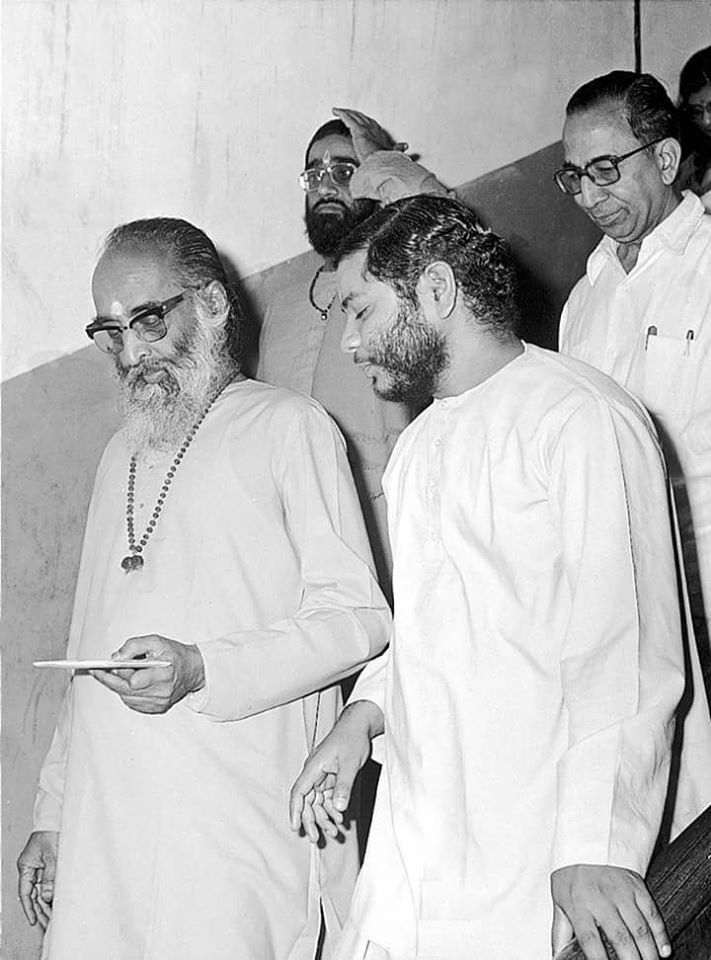UPANISHAD MANDUKYA : Chapter-1. Agama Prakarana : Upanishad Mantram - 8 to 11. : Karika Sloka-s 19 to 23. : Upanishad Mantram-9.
-----------------------------------------------------------------------------------------------
Friday, August 28, 2020. 7:17 AM.
Mandukya Upanishad :
Chapter-1. Agama Prakarana ( The Scriptural Treatise )
Sri Gaudapada's glossary :
Upanishad Mantra-s - 8 to 11.
Karika Slokam-s 19 to 23..
-------------------------------------------------------------------------------------------
Upanishad Mantram - 9.
"Jgrito - sthano vaisvanaro - 'karah
prathama matra - "pteradi - matt - vad - va -"pnoti
ha vaisarvan - kaman - adis - ca
bavati ya evam veda."
----------------------------------------------------------------------------------
Translation :
Jagarita sthanah = having sphere ( of activity )is waking state field , ;
vaisavanarah = vaisavanara ( virat );
akarah = is 'A'
prathama matra = the first letter ( of Aum )
apteh = on account of its all-pervasiveness;
va adimat - tvat = or being the first or primacy;
apnoti ha vai = he surely attains;
sarvan kaman = all desires;
adih = the foremost;
ca bhavati = and becomes;
yah = that;
evam = thus;
veda = knows ( meditates).
-------------------------------------------------------------------------------------------
Tatvam ( Essence ) of the Mantram :
"He who is vaisvanara having for his sphere of activity the waking-state is 'A' , the first letter of Aum, on account of its "all pervasiveness" or on account of "being the first" ----- these two are the common features in both. One who knows thus surely attains the fulfillment ( Sakshatkaram ) of allhis desires and becomes the first or the foremost among all."
-------------------------------------------------------------------------------------
Shankara Bhashya (commentary) :
Points of specific resemblance between them are thus pointed out. That which is Vaiśvānara, whose sphere of activity is the waking state, is the first letter of Aum. What is the Common feature between them? It is thus explained: the first point of resemblance is pervasiveness.
1 All sounds are pervaded 2 by A. This is corroborated by the Sruti passage, “The sound A is the whole of speech.”
Similarly the entire universe is pervaded by the Vaiśvānara as is evident from such Śruti passages as, “The effulgent Heaven is the head of this, the Vaiśvānara Ātman,” etc. The identity of the name and the object, indicated by the name, has already been described. The word ‘Ādimat’ means that this has a beginning.
As3 the letter A is with a beginning, so also is Vaiśvānara. Vaiśvānara is identical with A on account of this common feature.
The knower of this identity gets the following result 4: One who knows this, i.e., the identity described above, has all his desires fulfilled and becomes the first of the great.
-------------------------------------------------------------------------------------------
Glossary :
1 Pervasiveness—A (अ) pervades all sounds. It is present in all sounds. No articulate sound can be produced without opening the mouth and the sound that is thus produced is A (अ).
2 Pervaded, etc.—It has been already stated that the knowledge of all other states are possible only from the waking state. The three states constitute our entire experience of the universe. Therefore the waking state pervades the whole of the universe.
3 As, etc.—This is the second point of resemblance. A is the first of all sounds or letters. Therefore A has a beginning because no other sound or letter precedes A. Similarly from our common experience it is known that the states of dream and deep sleep are preceded by the waking state which is therefore the first of the three states.
4 Result—The enumeration of the merits is for the purpose of inducing students to understand the meaning of Aum.
To be continued ...
===============================================================







.jpg)

Comments
Post a Comment